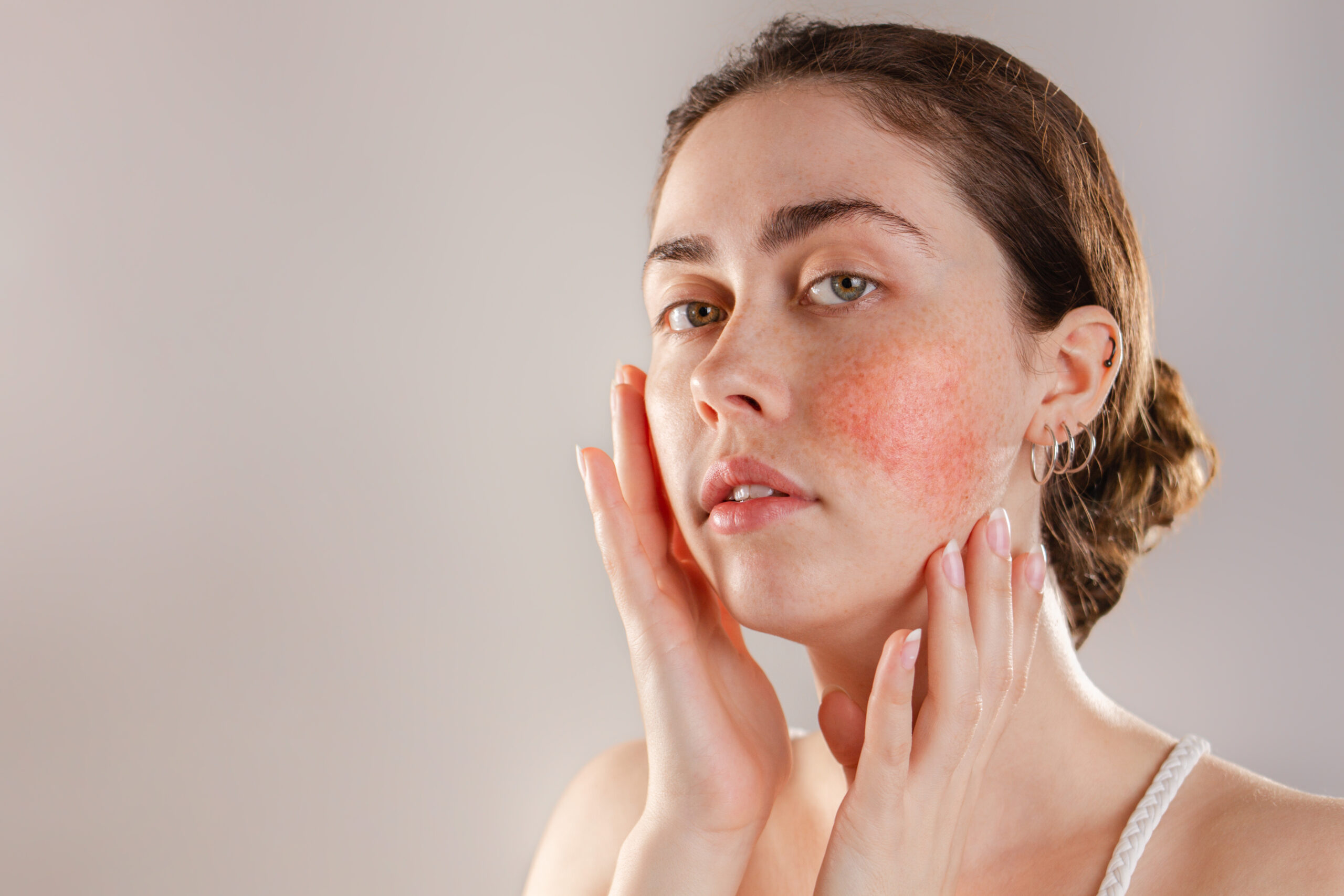Every day, cosmetologists are confronted with various challenges that the skin presents. For this reason, it is important to make a correct diagnosis in order to provide their clients with results that improve their quality of life.
One of these challenges is represented by “sensitive skin” We also know that many of our readers are faced with this condition. So today, we’ve decided to talk about the signs, symptoms, causes and different forms in which “sensitivity” appears on the skin and why it is important to treat this skin condition. Interested in learning more? Read on!
Signs
- Flushing or redness
- Scaling
- Premature wrinkles
Symptoms
- Heat, burning
- Itching
- Tenderness (feeling of dryness)
- Peeling
- Pain (sometimes)
- Tumor (increase in the volume of the skin)
The causes of this skin condition can vary. In reality, the signs and symptoms described above are the result of excitability of the nerve endings in the skin due to:
- Internal factors: stress, medication, hormonal changes.
- External factors: prolonged exposure to UV rays, contact with a specific cosmetic, continuous exfoliation, frequent exposure to hot or cold temperatures, heating.
III. Skin characteristics: skin color, biotype, texture. White, and fine-textured skin tends to have sensitivity more frequently. However, sensitivity can be present in any skin biotype and at any age, from childhood to middle age, or appear suddenly and increase over time. This is where the cosmetologist must be attentive at the time of diagnosis because the treatment will depend on it. We will identify the following cases:
- Sensitive skin: the person reports having the signs and symptoms described above since childhood.
In this case, the skin must be treated.
- Reactive skin: the person has not presented signs and symptoms related to sensitive skin but one day, after exposure to an external agent, unexpectedly and suddenly, the skin becomes red, itchy, burns, the temperature rises … In this situation, it is necessary to identify what the skin has been exposed to:
- Immediately remove the triggering factor with plenty of water.
- Apply a moisturizing cream without dyes or perfumes.
The cosmetologist must find out what the substance was that the skin reacted to and inform the client so that he/she can make sure not to use it again.
III. Sensitized skin or secondary sensitive skin: it is the one that appears after having presented a certain pathology such as atopic dermatitis, seborrheic dermatitis, acne, among others. A person can even sensitize his or her skin because of bad habits that alter the barrier function by reducing the amount of lipids needed to maintain its hydration or by changing its pH, because by becoming more acidic or alkaline, the “acid mantle” loses its balance allowing the entry of viruses, bacteria and harmful microorganisms.
Some examples of these habits are:
- Excessive use of astringents, products with sulfur.
- Sculpting the skin with grass during the daily bath.
- Daily exfoliation with brushes or exfoliating products.
- Improper use of steam.
- Application of topical medications without medical approval.
- Exposure to air conditioning
- Sleeping with dirty skin or makeup on
- Wearing sunscreen and not washing your face at night
- Do not wear sunscreen
In these cases, it is essential that the cosmetician advise the client on the habits to be modified to improve the health and appearance of the skin. In addition to carrying out treatments with active ingredients that promote the improvement of the skin.
But why is it so important to treat sensitive skin?
The treatment of sensitive skin should be considered a priority by the client because, over time, signs and symptoms can worsen depending on factors such as genetics, exposure to internal and external agents, age, gender, biotype, phototype, etc.
A skin with sensitive characteristics can increase your signs and symptoms and thus worsen your condition:
- Redness and heat
- Redness, heat, itching
- Redness, heat, itching, peeling, tightness, pain, tumor
- Becoming “couperose
- Go through the different stages of “rosacea”.
- In addition to giving the skin an aged appearance
There you are! How about you? Do you have sensitive skin too? What have you been doing so far? Share your tips in the comments below.


